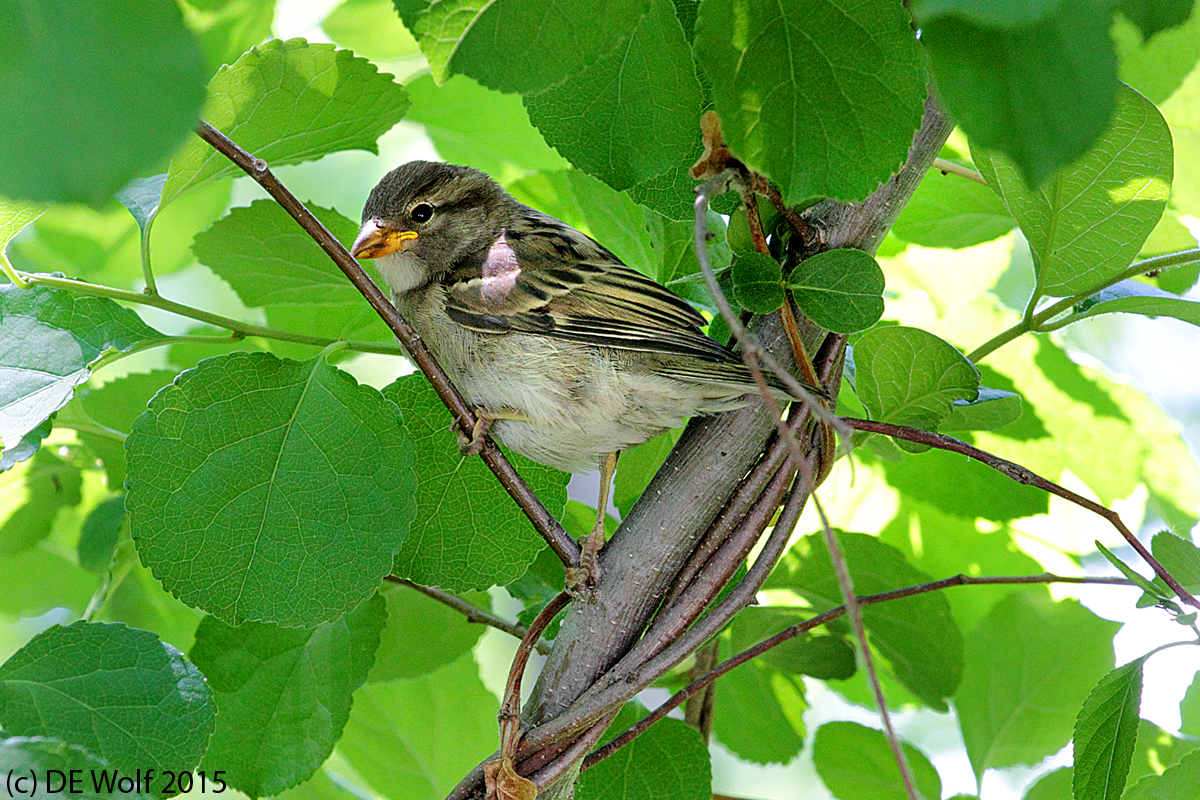Bird photography can be different from other forms of photography in that it has a cataloguing element to it, that is the desire to photograph every species at a given location. That’s great because it is almost invariably an impossible task – and there is nothing more humbling than attempting the impossible. Hmm! This also leads to the view that no bird is too common or too plain to be worthy of portraying. You know, like the phrase: “All children are special!”
In that context, I have been trying to find the right opportunity and setting to get a good portrait of the common house sparrow, Passer domesticus, and on Friday took the photograph of Figure 1 of a representative female in a bush at Fresh Pond. Sparrows are pretty tolerant of you are walking along. But I find that as soon as you stop and raise camera to eye they beat wings.
Despite their ubiguity, the house sparrow is not native to North America. They’re just a highly successful species. They were in fact introduced to North America in 1852 upon the release of several specimens from England. Indeed, one of the reasons for its introduction around the world is an association of the sparrow with homeland.
Not a whit, we defy augury. There is special providence in
the fall of a sparrow. If it be now, ’tis not to come; if it be not to
come, it will be now; if it be not now, yet it will come—the
readiness is all. Since no man, of aught he leaves, knows what is’t
to leave betimes, let be.
Hamlet Act 5, scene 2, 217–224
Canon T2i with EF70-200mm f/4L USM lens at 176 mm, ISO 1600, Aperture Priority AE mode, 1/160th sec at f/8.0 with no exposure compensation.

